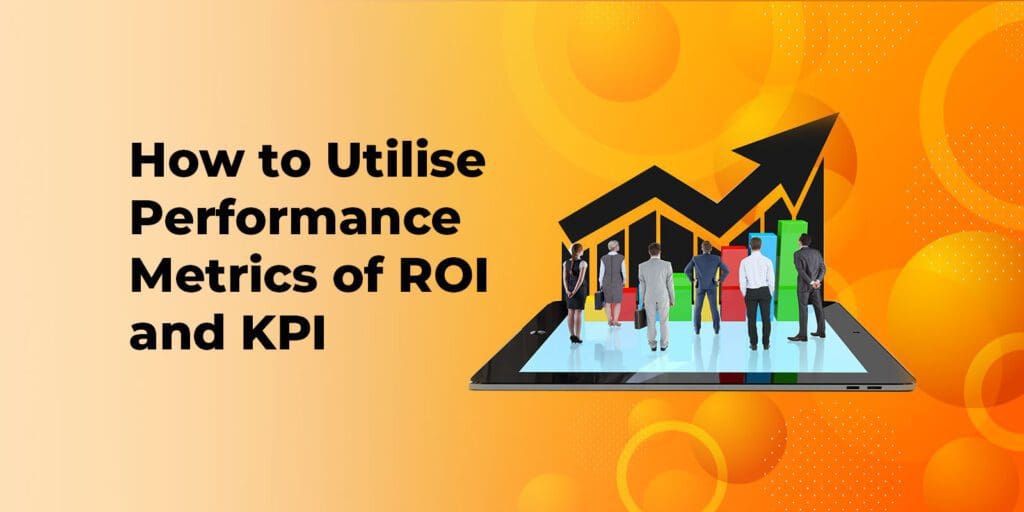Table of Contents
How to Utilise Performance Metrics of ROI and KPI
A well-performing business is one that makes money. Despite any ups and downs, there will be good revenue churn. How do we know whether a startup or a business is successful? How do we gauge what measures are benefiting the business or which productivity measure is actually working? This is where performance metrics such as ROI and KPI come into play. Keep reading to find out how these metrics work, what they can tell about business success, and what their benefits are.
What are Performance Measurement Tools?
Performance measurement is the gauging of the effectiveness or success of projects, programs and initiatives: Performance measures are also referred to as performance metrics and performance indicators, allowing for interchangeable usage of the terms. Performance metrics are data which track processes in each stage of a business. The metrics measured usually include areas such as:
- Employee behaviour
- Employee productivity
- Activities
- Scope of work
- Quality and satisfaction of work
- Effectiveness of results
- Profitability and so on.
- Performance Measurement
These metrics are later utilised by employers to assess and evaluate performance. Performance metrics must be in the form of data that gauges required data, typically within a range. This allows for the formation of a basis that can aid in the attainment of overall company goals. Through these performance measurements, employees’ productivity can be measured by seeing if targets are being met.
ROI and KPI are examples of measurement tools used by businesses to measure whether or not they have been successful in finishing certain objectives or goals. These tools give project managers or business managers quantitative methods that can be used to internally evaluate success levels. With this analysis, they can understand the employee’s efforts with the help of metrics.


Measuring Business Success with Return on Investment (ROI)
ROI stands for Return on Investment, and it is a metric that measures the profitability of a business investment. The ratio of an ROI compares how much money you used for an investment to how much you earned. This will help understand the efficiency of the investment.
The formula used to calculate ROI is:
(Gains from Investment – Cost of Investment) / Cost of Investment
ROI is used by both individual investors and businesses, and since it is expressed as a percentage, it is easier to compare different investment choices and their profitability. When what you receive is more than what you invested, it is considered a good ROI. By calculating various financial investments, ROI becomes a helpful tool that can help decide which projects or actions to pursue.
However, one disadvantage of this metric would be that it only shows the potential gain one can make from an investment, and not what one can lose. It is very revenue-focused and completely disregards the non-financial benefits of an investment.
Measuring Business Success with Key Performance Indicator (KPI)
A key Performance Indicator (KPI) is a measurable and quantifiable metric used to track progress towards a specific goal or objective. KPIs are used aiming to determine both strengths and weaknesses of an organisation. It also measures progress toward a wide set of goals ranging from revenue growth, employee productivity and turnover, customer satisfaction, and so on.
KPIs help make data-driven decisions and improve performance. Some examples include conversion rate, customer lifetime value, customer acquisition cost, sales growth, and so on. By giving teams targets to aim for and milestones to measure at every towards progress, KPIs help organisations identify their strengths and weakness
ROI and KPI in Digital Marketing
When it comes to digital marketing, these performance measures do the same function for digital marketers. Both ROI and KPI can be used as marketing metrics to measure the performance of a digital marketing campaign. Since upper management is usually out of touch with digital marketing, lower-level management depends on KPIs such as customer lifetime value to understand the success (or lack thereof) of marketing efforts. They understand if a product or service is working or not.
Metrics help measure the performance of a marketing strategy. Without these metrics, it’s hard to tell if the marketing campaign is doing well or not. A key performance indicator tells more than ROI. these metrics show how to focus on the goals set by upper management.
In digital marketing, KPIs are of great advantage. The KPIs vary from one organisation to the next depending on its status, vision, and short-term and long-term goals. Marketing managers can understand some concepts such as the following through KPIs
- Cost Per Acquisition in Digital Marketing: Cost per acquisition, when rightly measured, can help make better marketing funnels. A lower cost per acquisition indicates a higher profit margin for the company.
Types of KPIs
Key Performance Indicators are mainly used to measure two things: A) the outcomes of progress such as revenue growth and B) the output of outcomes to upper management business objectives.
Output-based KPIs outline the goals set by lower-level teams to reach outcome KPIs. Some popular marketing metrics for measuring output KPIs that achieve outcome KPIs include:
- Cost Per Lead: With this output-focused KPI, businesses can understand the impact of their digital marketing campaign on generating leads. For example, a paid advertising campaign using Google Adwords to increase traffic on landing pages to convert consumers to paying customers.
- Digital Marketing ROI: This helps measure company growth. Once a company understands the average amount of sales converted from the website, measuring the ROI of the digital marketing campaigns is easy. For example, if you know that for every $1 of ad spend produced from traffic to the website the company gets $3, this is an ROI of 200%
- Click-Through Rate: This output-focused KPI helps increase the digital marketing ROI of paid and organic searches on Google. Marketers utilise google analytics to examine the click-through rate of their paid lead generation from Google.
To Sum Up
Both KPIs and ROIs are crucial in digital marketing to understand if marketing efforts are successful or not. They can be used as measurements to understand the performance of a digital marketing campaign.
Are you looking to understand if your business is going on the right path?
Sign up for free today and talk to our experts!



